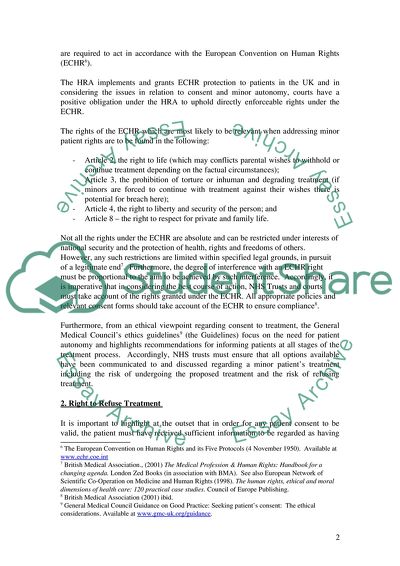Cite this document
(Is the Autonomy of Children Upheld in Consenting to Medical Treatment Coursework, n.d.)
Is the Autonomy of Children Upheld in Consenting to Medical Treatment Coursework. Retrieved from https://studentshare.org/medical-science/1718168-by-an-analysis-of-case-law-how-far-do-you-consider-that-the-autonomy-of-children-is-upheld-with-regard-to-consenting-to-medical-treatment
Is the Autonomy of Children Upheld in Consenting to Medical Treatment Coursework. Retrieved from https://studentshare.org/medical-science/1718168-by-an-analysis-of-case-law-how-far-do-you-consider-that-the-autonomy-of-children-is-upheld-with-regard-to-consenting-to-medical-treatment
(Is the Autonomy of Children Upheld in Consenting to Medical Treatment Coursework)
Is the Autonomy of Children Upheld in Consenting to Medical Treatment Coursework. https://studentshare.org/medical-science/1718168-by-an-analysis-of-case-law-how-far-do-you-consider-that-the-autonomy-of-children-is-upheld-with-regard-to-consenting-to-medical-treatment.
Is the Autonomy of Children Upheld in Consenting to Medical Treatment Coursework. https://studentshare.org/medical-science/1718168-by-an-analysis-of-case-law-how-far-do-you-consider-that-the-autonomy-of-children-is-upheld-with-regard-to-consenting-to-medical-treatment.
“Is the Autonomy of Children Upheld in Consenting to Medical Treatment Coursework”. https://studentshare.org/medical-science/1718168-by-an-analysis-of-case-law-how-far-do-you-consider-that-the-autonomy-of-children-is-upheld-with-regard-to-consenting-to-medical-treatment.


